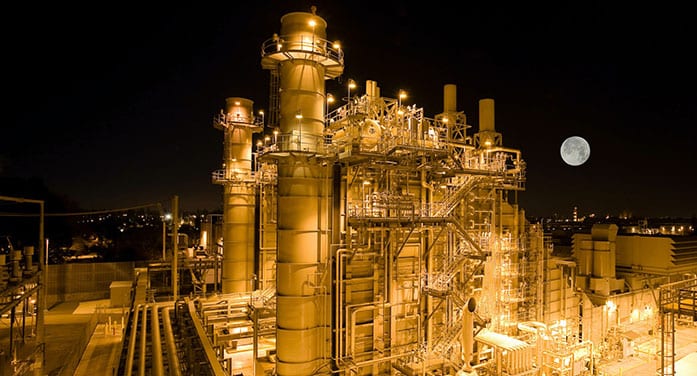By Mark Milke
and Lennie Kaplan
Canadian Energy Centre
The United States banned exports of crude oil in the mid-1970s, as the result of an oil embargo directed at the U.S. by Middle Eastern countries.
The embargo began as a result of American support for Israel during the 1973 Yom Kippur War. In response, some members of the Organization of Petroleum Exporting Countries (OPEC) halted shipments of oil to the U.S. The OPEC embargo ended in 1974, but U.S. Congress, fearful of a repeat, banned most American oil exports to preserve stocks for domestic use.

Mark Milke
It was only in December 2015 that President Barack Obama lifted restrictions on exports of U.S. oil to the rest of the world, effective the following year. The result has been a boom in crude oil exports, rising from 465,000 barrels of oil daily in 2015 to almost 3.2 million barrels a day in 2020.
America’s lifting of its self-imposed 40-year ban on oil exports meant the U.S. was now in competition with Canada for oil export customers.
It also meant that some U.S. refineries would need more Canadian heavy oil. As Oil Sands Magazine has pointed out, this need arose as a result of increasing production from U.S. shale fields.
Heavy oil has a relatively high American Petroleum Institute (API) density. API measures the density of a crude oil or refined products. Crude oil will typically have an API between 15 and 45 degrees. (The higher the API, the lighter the crude, the lower the API, the heavier the crude.)
The problem for some U.S. refineries is that as the American-sourced domestic supply of crude became increasingly lighter, approaching 40 degrees on the API scale. That created a mismatch with the desired refinery feedstock density, which averages about 32 degrees.

Lennie Kaplan
That’s where heavier Canadian crude oil from the oil sands comes in, as refineries seek to blend light domestic crude with heavy and medium-grade oil imports. By adding imported heavy crude oil to domestic light crude oil during production, the U.S. has significantly increased its ability to export refined oil.
Declining exports from U.S. heavy oil suppliers in Venezuela and Mexico have also opened the door to more Canadian heavy oil in the Gulf Coast refining cluster, which is the world’s largest heavy-oil processing area.
The percentage of total imports of Canadian heavy oil to the U.S. rose from 25.1 per cent in 2000 to 55.8 per cent in 2019. American imports of oil from Canada have risen from 1.3 million barrels daily in 2000 to two million daily in 2010 and reached 3.8 million barrels daily in 2019.
This American need for heavy crude oil has been positive for Canada’s oil exports. However, increasing Canadian oil exports to the United States doesn’t mean the various attempts to obstruct Canadian crude oil exploration, production, pipelines and exports have been unsuccessful.
The Obama administration blocked the Keystone XL pipeline, then former president Donald Trump allowed it to proceed, followed in January by President Joe Biden killing the project on his first day in office.
In Canada, proposed pipelines such as Northern Gateway and Energy East were thwarted by a combination of politics and activism: tanker bans on the northern coast of B.C., and anti-oil activism and political opposition in Quebec.
Killing access to markets that would have offered Canada an alternative to American sales has been costly. A lack of extra pipeline access to coasts means it’s difficult for Canadian producers to sell oil into non-American markets.
And crude oil shipped by train is sold at a discount to its price if shipped by pipelines.
Before the COVID-19 pandemic temporarily cut into demand, Canadian oil-by-rail shipments to the United States reached nearly 412,000 barrels of oil daily in February 2020, a monthly record. In 2012, the earliest year of data, daily crude oil shipments peaked at only 125,000 in December and had been as low as 9,725 barrels in January.
Shipping oil by rail presents higher risks and is more expensive. In 2019, the Fraser Institute estimated that from 2013 to 2017, after accounting for quality differences and transportation costs, the depressed price for Canadian heavy crude oil resulted in C$20.7 billion in foregone revenues for the Canadian energy industry. In 2020, IHS Markit estimated the loss of income for Canadian producers at US$14 billion between 2015 and 2019. IHS called that number “conservative.”
If anyone thinks the U.S. can do without Canadian oil, especially Canadian heavy oil, they’re misinformed. Canadian oil is critical to the United States and, increasingly, for blended oil for its own oil exports.
Mark Milke and Lennie Kaplan are with the Canadian Energy Centre, an Alberta government corporation funded in part by carbon taxes. They are authors of the report Analyzing the Contributions of the Canadian Crude Oil Sector to U.S. Petroleum Refineries.
Mark and Lennie are among our Thought Leaders. For interview requests, click here.
The views, opinions and positions expressed by columnists and contributors are the authors’ alone. They do not inherently or expressly reflect the views, opinions and/or positions of our publication.
© Troy Media
Troy Media is an editorial content provider to media outlets and its own hosted community news outlets across Canada.

